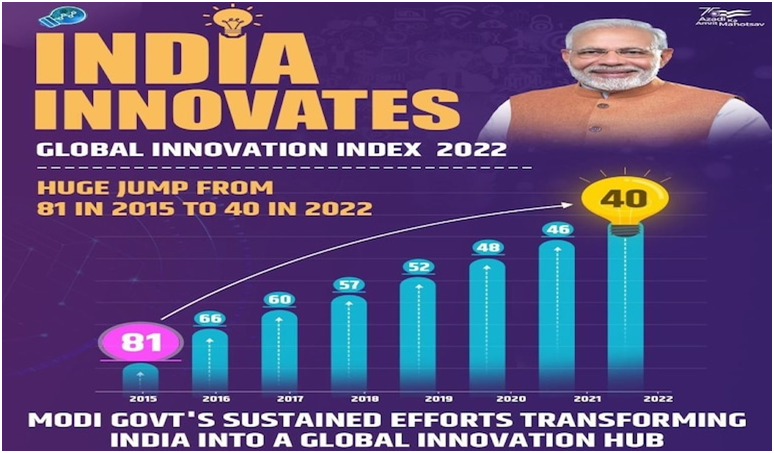UNESCO launches list documenting 50 iconic Indian heritage textiles (GS Paper 1, Art and Culture)

Why in news?
- Recently, the UNESCO released a list of 50 exclusive and iconic heritage textile crafts of India.
Why it matters?
- ‘Handmade for the 21st Century: Safeguarding Traditional Indian Textile’ lists the histories and legends behind the textiles, describes the complicated and secret processes behind their making, mentions the causes for their dwindling popularity, and provides strategies for their preservation.
- According to UNESCO, one of the major challenges to the safeguarding of Intangible Cultural Heritage in the South Asia is lack of proper inventory and documentation. The publication, which aims to bridge this gap, brings together years of research on the 50 selected textiles.
- In addition to acting as a sample of endangered textile crafts, the UNESCO publication also includes recommendations for the protection and revitalization of these textile crafts, that cover both the broad-spectrum of issues extending from policy to grass-root based micro-interventions.
Iconic handicrafts:
- Toda embroidery and Sungadi from Tamil Nadu, Himroo weaves from Hyderabad and Bandha tie and dye weaving from Sambalpur in Odisha were some of the textiles that made the cut.
- Some of the iconic handcrafted textiles documented from North India are Khes from Panipat, Chambarumalsfrom Himachal Pradesh, Thigma or wool tie and dye from Ladakh and AwadhJamdani from Varanasi.
- From the south, Ilkal and Lambadi or Banjara embroidery from Karnataka, SikalnayakanpetKalamkari from Thanjavur have been included.
- Kunbi weaves from Goa, Mashru weaves and Patola from Gujarat, Himroo from Maharashtra and Garad-Koirial from West Bengal also find a place among the 50 iconic textiles.
Way Forward:
- India must consider expanding its register of elements inscribed in the UNESCO Representative List of the Intangible Cultural Heritage of Humanity by nominating one of the textile crafts featured in this publication.
Armed forces must have mechanism for disciplinary proceedings against officers for adultery: SC
(GS Paper 3, Defence)
Why in news?
- Recently, the Supreme Court said that armed forces must have some kind of mechanism for disciplinary proceedings against their officers for adultery as “this is a conduct that can shake up the life of officers.”
- The top court said adultery creates “pain” in a family and it should not be treated in a lighter manner.

2018 judgement:
- The apex court 2018 judgement, which declared penal provision on adultery as unconstitutional, cannot be referred to halt disciplinary proceedings against guilty.
- The judgement was made by a five-judge Constitution bench headed by Justice K M Joseph.
- The top court, on a plea filed by NRI Joseph Shine, in 2018 had struck down Section 497 of the Indian Penal Code, dealing with the offence of adultery while holding it unconstitutional.
Plea by Ministry of Defence:
- The observations by the bench came after Additional Solicitor General Madhavi Divan, appearing for the Centre, submitted a plea seeking clarification of the 2018 judgement has been filed by her.
- The Ministry of Defence (MoD) had moved the apex court saying that the 27 September, 2018 judgement striking down adultery as an offence could come in the way of armed forces personnel being convicted for adulterous acts.
- She told the bench that disciplinary actions were taken against certain army personnel for adultery, however, the Armed Forces Tribunal (AFT)quashed such proceedings in many cases, citing the Joseph Shine judgement.
- The ASG informed the apex court that disciplinary actions taken in the Army are gender neutral and even if a female officer is found to be indulging in adulterous activities, she will also face action for misconduct.
Conclusion:
- The top court said there was nothing in the 2018 judgement which precludes the armed forces and it can challenge the individual orders of the AFT.
Global Innovation Index 2022
(GS Paper 3, Economy)
Why in news?
- Recently, the ‘Global Innovation Index 2022’, an annual report was released by the World Intellectual Property Organisation (WIPO).
India’s progress:
- India rose to 40th among 132 countries in the Global Innovation Index 2022, jumping six places from a year ago.Earlier in 2020, India entered into the top 50 in 2020 and found a place in the top 40 in 2022.
- This was mainly due to an improvement in information and communication technologies (ICT) servicesexports, venture capital recipients’ value as well as finance for start-ups.
- India’s rank has risen by 41 places since 2015, when it was at the 81st spot. The country’s rank stood at 46 in 2021 in the index that tracks innovation both in government policies and industry practices.
- Earlier in 2020, India entered into the top 50 in 2020 and found a place in the top 40 this year.

Remarks on India:
- India is the innovation leader in the lower middle-income group.
- It continues to lead the world in ICT services exports and holds top rankings in other indicators, including venture capital receipt value, finance for startups and scaleups, graduates in science and engineering, labor productivity growth and domestic industry diversification.
Top rankers:
- Switzerland has emerged as the world's most innovative economy for the 12th consecutive year.
- Switzerland, the US, Sweden, the UK and the Netherlands are the world’s most innovative economies, with China on the threshold of the top 10.
- Other emerging economies are also showing consistently strong performance, including India and Turkey, both of which entered the top 40 for the first time.
- India has overtaken Vietnam (48th) as the top lower middle-income economy for innovation.
About GII 2022:
- The GII 2022 report, in its 15th edition is published by WIPO, in partnership with the Portulans Institute and with the support of its corporate partners including the Confederation of Indian Industry (CII), the Brazilian National Confederation of Industry (CNI), Ecopetrol (Colombia), and the Turkish Exporters Assembly (TIM).
- The rankings were based on the areas of human and capital research, business sophistication, infrastructure and technology outputs among others.
India to export Pinaka rocket launchers, ammunition to Armenia
(GS Paper 3, Defence)
Why in news?
- Recently, India has signed a $250 million deal to export arms and ammunition to Armenia, which is currently engaged in a tense stand-off with its neighbour Azerbaijan.
- India will be sending indigenously developed multi-barrel Pinaka launchers, anti-tank rockets, and other range of ammunitions to the former Soviet region.

Pinaka system:
- The Pinaka system has been developed by Defence Research and Development Organisation (DRDO) and is manufactured by Indian private firms.
- The rocket system, which is currently in service with the Indian Army, can fire a salvo of 12 rockets in 44 seconds.
Swathi radars:
- Though this is the first time that India is exporting Pinaka missile system to another country, it has already exported weapons to Armenia.
- In 2020, India had bagged a $43 million deal to supply four Swathi radars to Armenia.
- These are weapon locating radars that can track incoming artillery projectiles and pinpoint the location of enemy gun positions for counter-action.
India’s defence exports:
- India has been looking to boost its arms exports and has taken various measures to enhance domestic production under its ‘Make in India’ policy.
- The Centre has set a target to sell weapon systems worth Rs 35,000 crore overseas by 2025.
- Notably, there has been an exponential increase in defence exports. In 2020-21, India exported equipment worth $90 million compared to $23 million in 2014-15.
Deal with Philippines:
- In January 2022, India inked a $375 million deal with the Philippines to provide the BrahMos cruise missile to the country’s navy.
- The Philippines navy will use this as an anti-ship shore-based missile that has a range of 290-km.
- BrahMos missile was jointly made by India's DRDO and Russia’s NPO Mashinostroyeniya.





